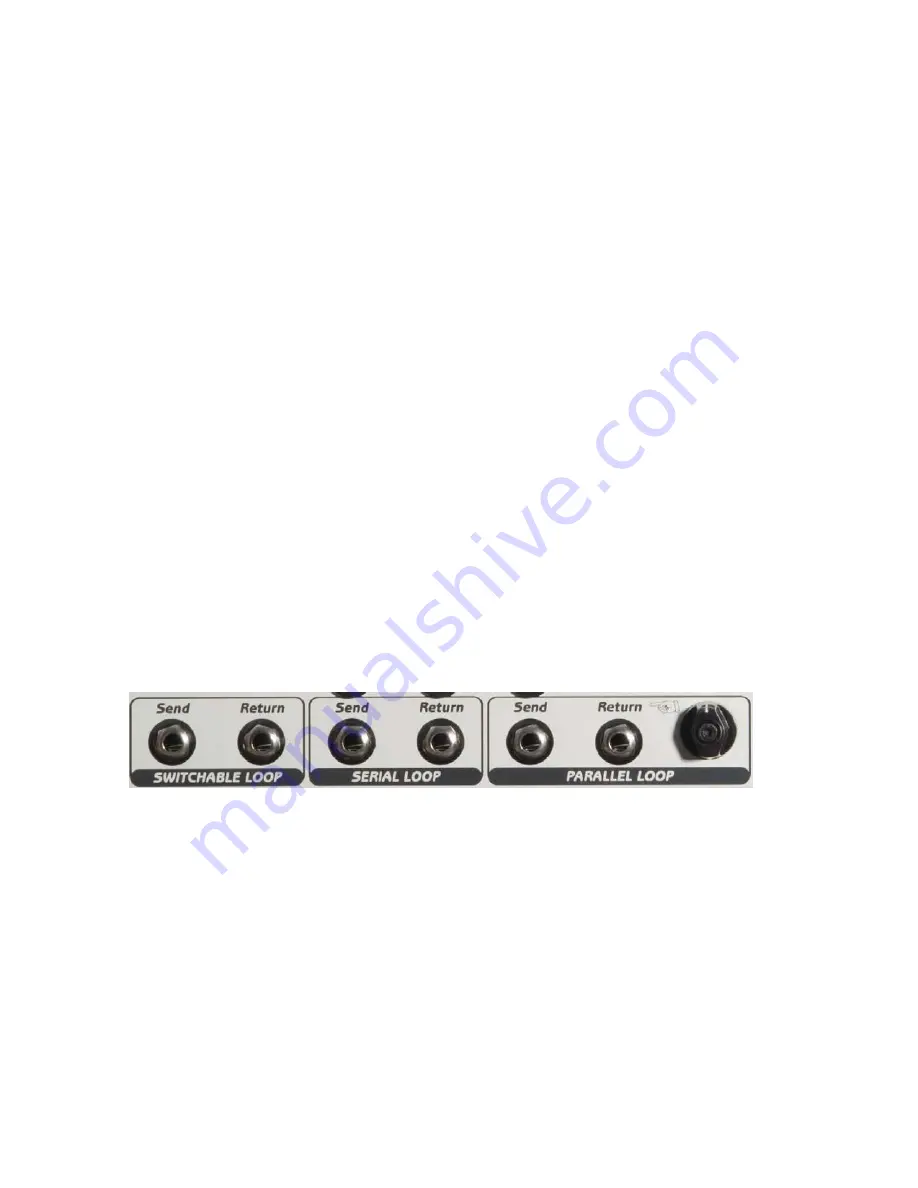
by the use of a long guitar cord that offers some high-end attenuation.
The loops of your Diezel Herbert send signals at higher levels and
impedances,
which makes this section of wiring less sensitive. You should still use
reliable and
good quality wiring for all loops and inserts.
3.2 Rear Panel Connections
3.2.1 Send/Return Loop
The System consists of 3 separate Loops. It allows creation of effects
path in either serial, parallel, or switched configurations. The
individual channel volume controls determine the signal strength at
the send jacks. The range is - ... to +10dB. The output impedance is
4.7 kOhm. If you want to use the loops, then connect the “Send” to
the input of the Effects unit. Be sure and adjust the input level of the
effects unit to the amplifiers level. Most effects units have led bar or
other level control devices. The Output of the effects unit must be
connected to one of the return jacks, parallel, switched, or serial. If
you use the parallel return, then the signal can be mixed to the
original signal via the rear panel mounted “Volume” control.
3.2.2 Parallel or Serial
Which is better for you? Read on.
There are 2 ways to handle effects signals. If you use the serial return,
then the signal path of your Herbert is interrupted, the signal is sent to
the processor, gets more or less processed, then sent back to the serial
return into the power amp. Digital effects units often digitize this
signal, then process it, then convert it back to analog, then send it to
the amp. This is called ADA conversion. It is necessary for digital
effects units to do this to your guitar signal, so that it becomes a digital
code, which the processor can read and understand. Your tubes,











































